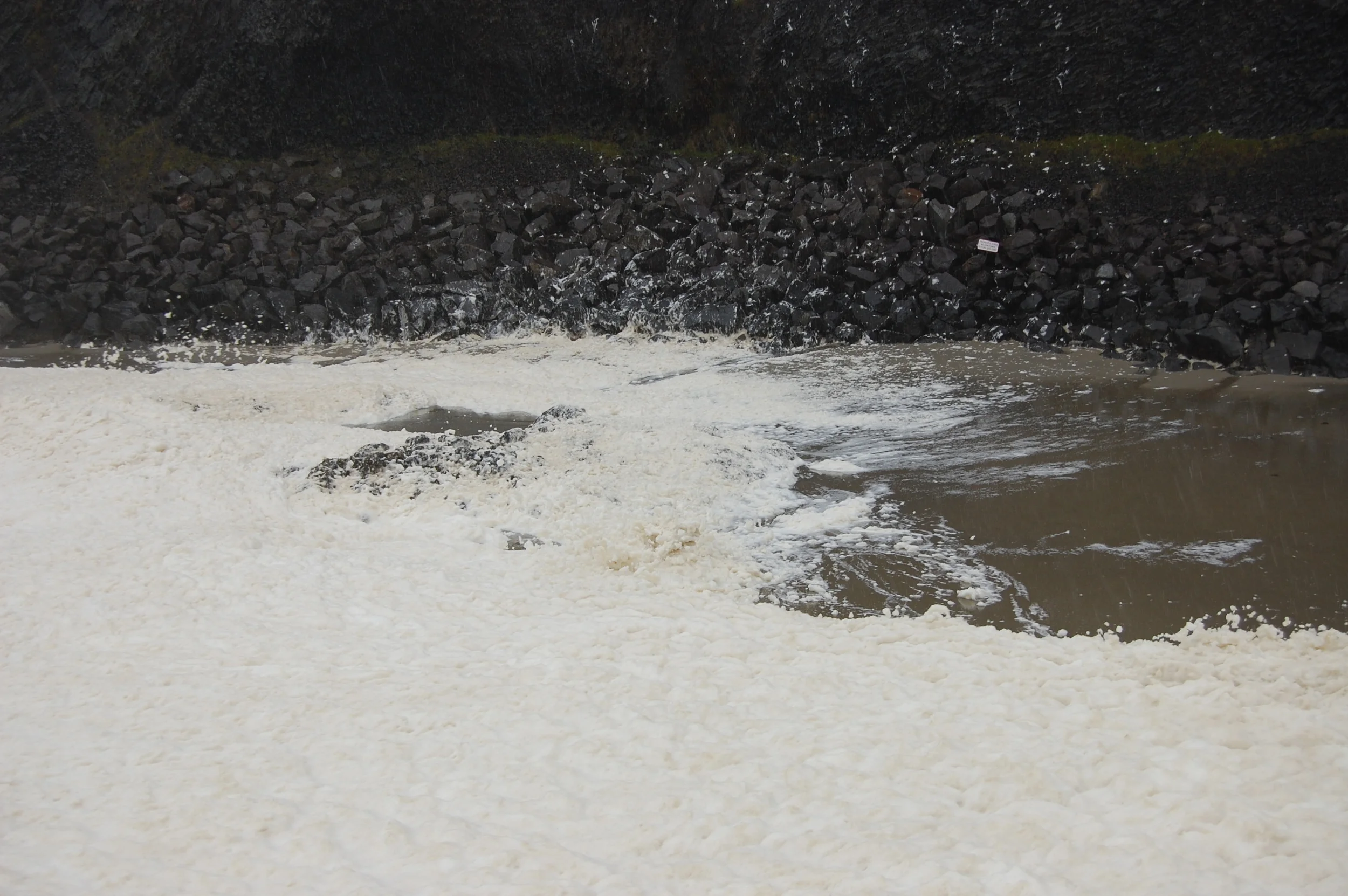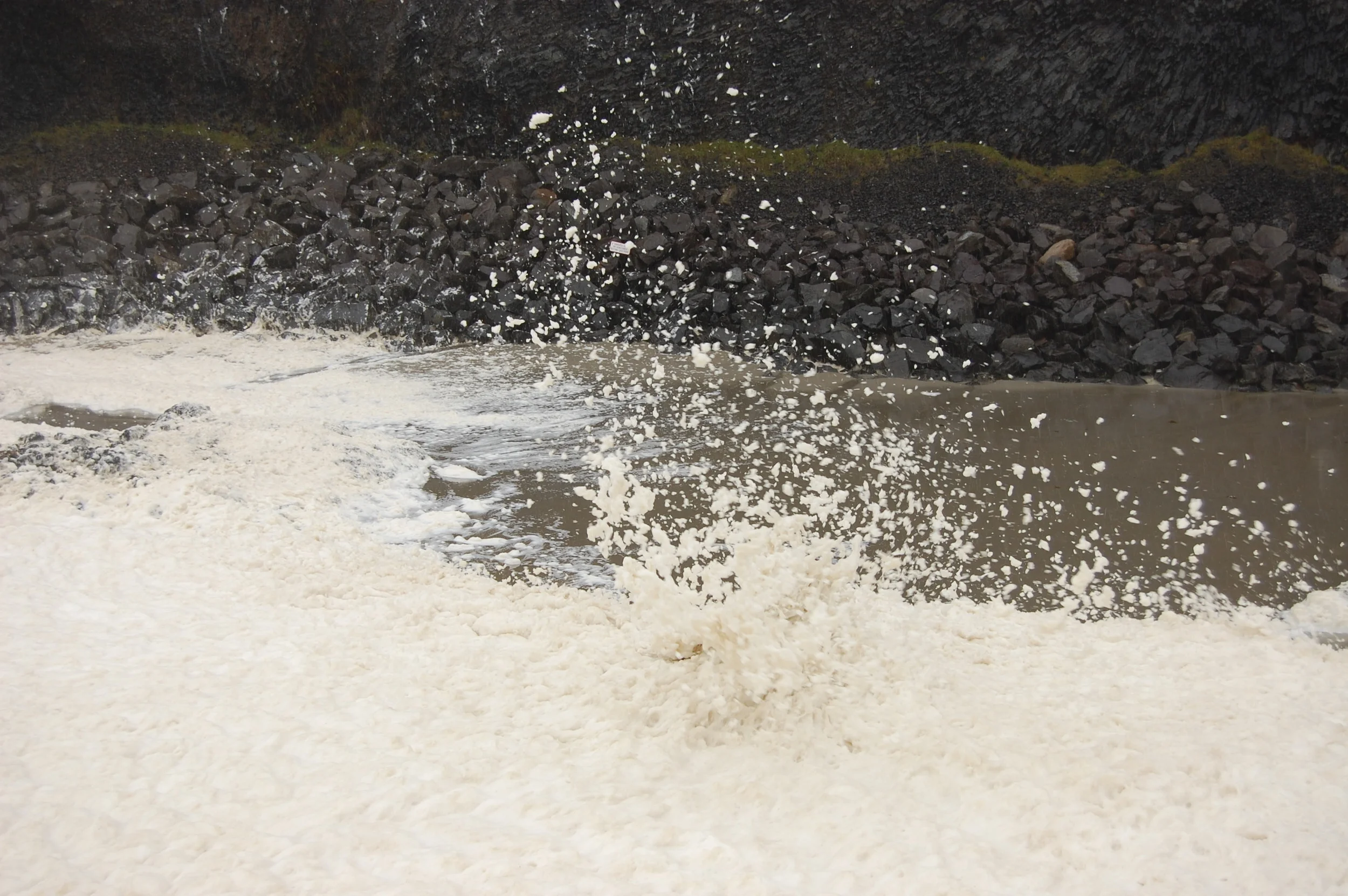In the last few weeks I've begun to think about where I would like my design scholarship to go. I've been seeing patterns in my work over the last few years and my time spent at ITAA seeing other scholars design work has made me think more critically about what kind of designer I am and what I hope to accomplish as a designer. I've done some reflection on the work that I've done and thought about the kinds of things I'd like to do and have noticed my work follows two veins: studies in sensory experience and tributes to natural phenomena through clothing (sensory experience being my autobiographical projects, projects based on movement, or clothing to elicit sensory responses). I have decided to pursue both of these endevours in a more purposeful way to create more complete and rigorous design scholarship. This year for my three ITAA entries I've decided to focus on tributes to natural phenomena. My first project in this new series will also be a study on movement and texture. I've decided to design three garments that pay tribute to my favorite place in the world: the Pacific coastline, specifically along the Oregon and Washington coasts.
The very first time I visited the Oregon coastline I went with my mother and my husband and it was shortly after our move to Oregon. The day was abysmal. It was very rainy and the wind was gusting close to 70mph. We tried to make the best of it and visited several key locations near Newport, OR. The most memorable place for me was the Yaquina bay natural area. We walked out to view the water and this odd seafoam had built up on the water and seemed to be overtaking the shoreline. The waves made the foam undulate with each swell and the wind was causing the foam to break up and fly into the air like snow. It was absolutely mesmerizing to watch. I had tried to capture the phenomena on my camera in several photos.
The foam was a light beige color, and parts of it were mixed with sand and various flotsam and jetsam from the shore. The surface of the foam was bumpy, almost like lava, but the whole thing moved with lightness and quivered in the high wind. It was beautiful.
Since seeing this I started to think about how I could mimic that kind of movement in a garment. The juxtaposition of the heavy looking sheet of foam with the lightness of it when wind hits it is fascinating. I began with some crazy ideas. My first involved trying to replicate the vertical flight of the foam in a swirling vortex. I designed large complicated garments with fans built into the skirt and along the back. I had pictured wiring all the fans to a phone app that I could turn on with the touch of a button and parts of the garment would lift and swirl seemingly on its own. This turned out to be a much larger engineering feat than my means could pay for (the only way to get battery operated fans all synched to an app was through a custom battery unit produced by one company that still had the project in Kickstarter phase and it would have cost hundreds!) I decided to test my grand idea on a small scale and purchased a small desk fan (small enough to sew into a garment) and sewed some fabric strips to it. The result was comical. Only the fabric closest to the blades would lift, and once they reached a certain height they'd fall in a sad stringy mess to the side. I had to change my approach.
I sat on the idea for a month or two trying to decide how to approach mimicking the seafoam. I thought of maybe sculpting cotton gauze with starch in order to get light but solid "bubbles" that I could loosely attach to a base fabric. This idea could work, but I did not like the woven texture the gauze would have, and the technique would be messy and not quite the light-but-solid look I was going for.
This last week I came upon a technique I think will work. I purchased batting, felt, and organza and constructed a small sample of "puffed" bubbles much like the image above. I layed batting in between the organza and felt and sewed tucks into the fabric, making ridges that resulted in fabric that looked a lot like the foam. The result is not light on its own, but with the right design and silhouette the movement of the garment itself could lend to the movement I am looking for.
To make the look more authentic, I sewed small glass beads, sequins, wooden beads, and sea shells into the tucks of the puffs much like how parts of the shore were mixed into the foam.
Once I had the technique down I began to think about the garment. I wanted the garment to have a large sweeping hem so that as the model walked the movement of her legs would add to the look of the garment. I immediately was drawn to one of my favorite Alexander McQueen garments: the Oyster dress
This dress was part of his Spring/Summer 2003 "Irere" collection wherein many designs were inspired by a ship wreck at sea. See the entry for this at the Met here. The gown is made to look like the edges of an oyster shell, and the large skirt and hanging ruffles reflect the image of a drowned maiden emerging from the waves. I adore this gown and the movement and rawness of it. The hanging strands of silk over the shoulders and the complex laying of the skirt are incredible. Seeing this garment in motion is similar to the type of movement I picture the foam dress to have. You can see the gown in motion here at 5:45. (I've also noted that the shape of this gown is similar to Elphaba's second act dress in Wicked but on a much larger scale and that's probably why I love it so much)
I decided that my silhouette would be less full, but still flared to allow full movement. I designed a high necked, extended sleeve bodice with a long circle skirt base to sew my puffs on to. My goal is to make my model look as if she just stood up from the sea and the foam has surrounded her body. Today I constructed the base of the garment from 72" craft felt so I have a sturdy, yet flexible base to sew my designs onto. The dress zips up with a cream colored invisible zip (since the fabric on top will eventually be cream colored). The waistline and shoulders are reinforced with twill tape to help support the eventual weight of the dress.
Once I get a large portion of the puffs sewn on I will make a new blog post about that. For now I have a lot of work ahead of me!!













